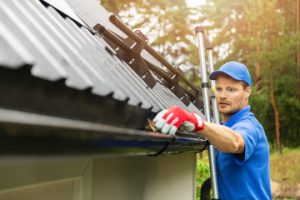A kitchen remodel is a major home improvement project that can be expensive. Understanding how to plan for your budget is important.

A well-planned kitchen renovation is a great investment and can increase your property value. It also makes your home more functional, bringing in better workflow and style. Visit https://jrcsi.com/ to learn more.
Your kitchen is the heart of your home, and a well-designed layout makes it easy for you to cook, entertain, and interact with family members. Your kitchen remodel project can include anything from replacing countertops and cabinets to relocating the powder room, opening up walls to create an open floor plan, and adding new lighting and appliances.
The scope of your kitchen remodeling project determines the overall timeline, cost, and final results. Choosing the right contractor to complete the work is a critical step. Start by meeting with a few contractors and getting bids for the work you want to be done. Then, choose a contractor that offers transparent pricing and contractual terms. Every contractor has their own written agreement, so read it carefully and ask any questions you have to be sure you understand it.
Once you’ve narrowed down your options, focus on defining the layout and aesthetics of your kitchen. Determine how much storage space you need and the best location for appliances. You should also consider how your kitchen will connect to adjoining rooms, as you may need to move doors or windows to accommodate the new layout.
Another important consideration is how your remodel will impact your daily routine. If construction is taking place during the week, plan for alternative ways to prepare meals and take care of household chores while the kitchen is out of commission. You might even need to create a temporary kitchen in another area of the house or rent a cooking space during the remodeling process. The last thing you want is to be completely dependent on take-out during the entire project. Lastly, remember to set aside a contingency fund – typically 10%-20% of your total budget – for unexpected expenses that arise during the course of the project.
Cabinets
Cabinets are one of the most important elements of a kitchen, not only in terms of storage but also in the way they define the space and create its overall aesthetic. Whether refacing or installing new cabinets, your cabinet door style and color will set the tone for the rest of your kitchen.
Cabinetry is available in a variety of materials, colors and styles to suit every taste. Traditional wood options include oak, maple and cherry, while painted and stained doors are popular among homeowners. New, innovative materials such as reclaimed wood and high-gloss thermofoil are also becoming increasingly popular. Both are easy to clean, require minimal maintenance and are resistant to scuffs and scratches.
According to Haack, cabinets typically make up the largest percentage of a kitchen remodeling budget. If you’re on a tighter budget, consider opting for pre-fab cabinets over custom-built options. These fully assembled cabinets are less expensive, and can be purchased in standard sizes to ensure a better fit.
Organize your cabinets by function to optimize their functionality. For example, you may designate a “cleaning / dish zone” that includes sink base cabinets for dishes, plates, bowls and mugs as well as cabinet storage for cleaning supplies like sponges, brushes and cloths. You may also include a cabinet with roll-out trays or shelves to store frequently used items such as spices and canned goods.
You can also maximize corner cabinet storage by adding a lazy Susan or a swing-out shelving system that smoothly swivels to allow access to hard-to-reach items in the back of the shelf. This maximizes accessibility and eliminates the need to reach blindly into corners where items are often tucked away and forgotten about.
Countertops
When remodeling a kitchen, the countertops are often a focal point. They need to work well for the intended functionality of the space but also add an aesthetic to the overall design. There are a variety of materials from which to choose, and each has its own pros and cons. A kitchen renovation is a great time to experiment with different countertop styles and material to find the one that fits your lifestyle and budget.
Laminate countertops are a budget-friendly choice for homeowners looking for a low-cost option that can be easily replaced when scratched or damaged. They can be fabricated to look like other more expensive materials, such as quartz. While not as durable as other options, they are easy to clean and offer a range of color options.
Granite is a popular, high-end option that can add value to your home and match most kitchen designs. It has excellent durability, heat and stain resistance. However, it can be expensive and may require more frequent resealing.
Marble is another natural stone option that has become increasingly popular in homeowner kitchens. It adds a sophisticated look and is available in a range of colors, but it can be more susceptible to scratches and needs special care for its longevity.
There is no countertop that is 100% resistant to stains, but stainless steel is an ideal choice for busy homes. Its strength, hardness and water-repellent properties make it a workhorse in many professional kitchens. It is also a highly customizable option, with a wide array of finishes and colors to complement most design schemes. Recycled glass and porcelain countertops are also gaining popularity. These materials are non-porous and resist stains, but they require regular sealing to keep them looking new.
Appliances
When it comes to kitchen appliances, choosing the right ones for your style can really impact how much you spend. For example, choosing more energy-efficient models can save you on monthly utility bills. You also have the option of upgrading to smart features that make cooking easier and add a sleek finish to your space.
The cost of your appliances will also depend on the brand and whether you go with a basic package or something more luxe. Ornate crown molding, pilasters and other unnecessary ornamentation will eat up your budget quickly, while keeping things simple can save you money. Appliances and cabinet costs account for the biggest chunk of kitchen remodeling costs, so it’s important to work within a budget you’re comfortable with. Experts recommend including 20% of your overall remodel cost in unforeseen expenses, such as water line replacements or moving electrical lines for new cabinets.
Ideally, you’ll select your appliances at the beginning of your kitchen remodel to ensure they fit with the rest of your design. For example, if you’re planning on a wall oven and cooktop for maximum flexibility, you’ll want to decide if you prefer built-in or freestanding models. You should also consider your desired appliance finishes, as matching or coordinating with the rest of your space creates a more cohesive look and feel to your kitchen.
If you’re looking for a contractor to handle your kitchen remodel, Sweeten can match you with trusted, local general contractors and provide you with upfront quotes for your entire project. Schedule a consultation to get started today!
Lighting
Lighting is one of the most important considerations in a kitchen remodeling project. Investing in a well-designed lighting plan makes the space more enjoyable to work in and creates a stunning aesthetic.
Most kitchens require a mix of ambient, task, and accent lighting to maximize functionality and appeal. During the planning phase, we’ll help you identify areas of your kitchen that need illumination and choose the best fixtures to suit those needs. We can also incorporate dimmers to adjust the ambiance based on the activities and time of day.
Ambient lighting provides overall illumination, while task lighting focuses on work areas like countertops and stovetops. Accent lighting is used to highlight specific design elements or architectural features. Popular options include pendant lights, recessed lighting, and track lighting. We can even install under cabinet lighting to light your backsplash or illuminate storage areas.
As you shop for lighting, look for options that are on-trend with the style of your Temecula home. For example, if you have a modern home with a minimalistic aesthetic, consider hanging pendant lights in your new kitchen. You can also find recessed, track, and puck lights in various sizes and finishes that will complement your new kitchen design.
Many reasons prompt homeowners to remodel their kitchens. A change in lifestyle is a common reason, such as an increase in entertaining or the need for a kid-friendly layout. Other changes might include updating your appliances or adding a smart home feature to improve energy efficiency.



